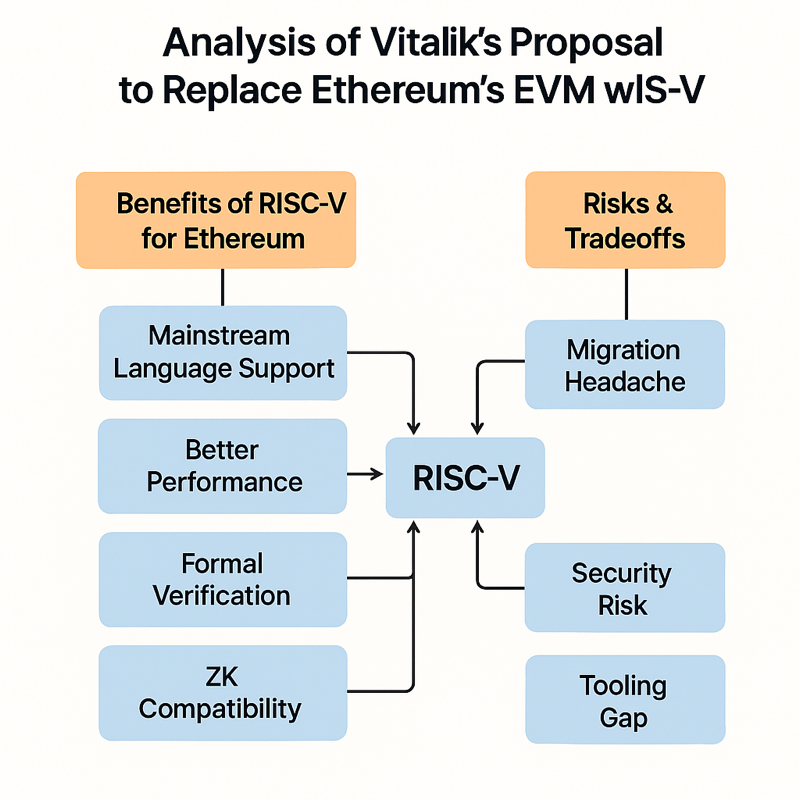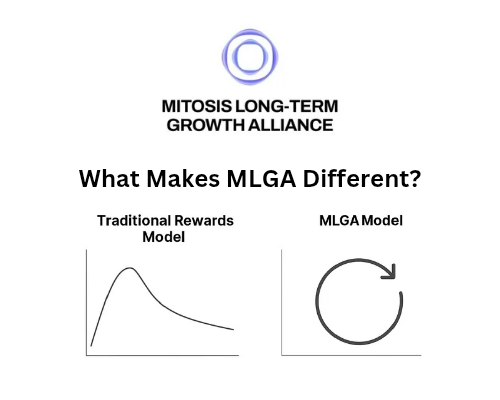Analysis of Vitalik’s Proposal to Replace Ethereum’s EVM with RISC-V: Implications and Parallels with Mitosis

In early 2025, Ethereum co-founder Vitalik Buterin introduced a bold long-term vision for the Ethereum execution layer: replacing the Ethereum Virtual Machine (EVM) with RISC-V, a standardized open-source instruction set architecture. The idea, while still in its conceptual phase, signals a fundamental shift in how smart contract platforms could operate in the future.
This article explores Vitalik’s motivations, the technical implications of moving to RISC-V, and how this proposal parallels architectural choices made in the Mitosis project — particularly in terms of modularity, scalability, and developer experience.
Why Replace the EVM?
The EVM has served Ethereum well for nearly a decade, but its design is constrained by its origins — a custom, stack-based virtual machine optimized for early blockchain experimentation. As Vitalik notes in his forum post, the EVM suffers from several limitations:
- Poor performance for complex operations
- Non-standard architecture that creates friction for compiler developers
- Incompatibility with modern languages and tooling
Replacing the EVM with RISC-V — a real-world instruction set already used in hardware and low-level systems software — could allow Ethereum to benefit from decades of compiler research, optimization tools, and broader developer adoption.
Benefits of RISC-V Integration
The transition to RISC-V could introduce several advantages:
- Wider Language Support: Compilers for mainstream languages like Rust, C, and Go already target RISC-V. This would lower the entry barrier for developers and enable safer, more efficient smart contract development.
- Improved Performance and Predictability: RISC-V enables fine-grained control over gas metering and performance tuning at the instruction level.
- Closer to Real Hardware: This opens the door for formal verification, reproducible execution, and even the use of zero-knowledge proofs directly over machine-level code.
Risks and Challenges
Despite the appeal, the proposal is not without tradeoffs:
- Migration Complexity: Transitioning from EVM to RISC-V would break backward compatibility unless carefully abstracted.
- Security Concerns: Lower-level code can introduce new risks unless well-audited.
- Tooling Maturity: Although RISC-V is growing in popularity, the Ethereum ecosystem would need new toolchains, debuggers, and runtime environments.
Parallels with Mitosis: Modularity and Future-Proof Design
Interestingly, many of the ideas Vitalik discusses — including standardization, developer-friendliness, and long-term sustainability — echo principles found in Mitosis.
Mitosis is a zk-native modular execution layer that separates concerns across specialized components. It embraces the idea that execution environments should be reprogrammable, interoperable, and provable — qualities that align with a potential shift from custom VMs (like EVM) to more standard architectures (like RISC-V).
Here’s how Mitosis complements this vision:
- Multi-language support: Mitosis is designed to support multiple high-level languages compiled to provable bytecode. Using a standard like RISC-V would align naturally with this direction.
- Zero-knowledge compatibility: Mitosis integrates ZKPs at the core, and using RISC-V could enhance performance of ZK proofs by allowing optimizations at the instruction level.
- Composable infrastructure: The modular nature of Mitosis could allow different execution environments to coexist — making it a testing ground for RISC-V based VMs without risking the entire system.
A Path Forward?
Vitalik’s proposal is a long-term vision — perhaps five to ten years out — but the seeds of this transition are already being explored in ecosystems like Mitosis. As zero-knowledge cryptography, modularity, and developer ergonomics become central themes in the blockchain space, the move toward open, standardized architectures like RISC-V seems increasingly plausible.
Mitosis could serve as both an experimental playground and a real-world implementation of many of the ideas Vitalik is advocating for — offering valuable insights on how to transition from legacy execution models to something more scalable, secure, and open.
Learn more about Mitosis here
Useful Mitosis Links
- Mitosis Litepaper — Learn the vision behind Mitosis, modular rollups, and their economic design:👉 https://docs.mitosis.org/docs/learn/litepaper
- Mitosis Blog — Explore updates, ecosystem news, technical breakdowns, and RaaS strategies:👉 https://blog.mitosis.org/
- Mitosis Link3 Profile — Quick access to Mitosis socials, campaigns, and ecosystem touchpoints:👉 https://link3.to/mitosisorg
Conclusion
While the Ethereum community has only begun to discuss the RISC-V proposal, it’s clear that we’re entering a new phase of blockchain infrastructure development — one that values interoperability, efficiency, and provability. Mitosis, with its modular architecture and zk-native execution, may well be a pioneer in this transition, setting the stage for a more flexible and powerful future for smart contract platforms.

Comments ()